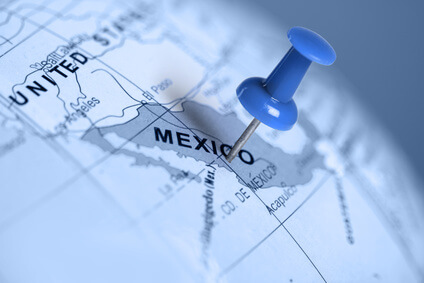What this is: When a secured transaction or acquisition involves a company from Mexico, it can often be difficult to know what public records can be searched as part of the due diligence process. In Mexico, there are three basic public record searches that can be run which can provide some information as to the indebtedness of an entity or individual. It is important to note, however, that these searches may not always provide a complete picture of the wide variety of security interests in personal property that can be found in Mexico, but things are improving.
What this means: Mexico has recently adopted a system similar to Article 9 of the Uniform Commercial Code and has implemented a centralized electronic filing and searching system. Yet, there are still many ambiguities and the fact that the system was only adopted in 2010 means that many active liens still remain under the older decentralized system.
RUG: Unified Registry of Movable Property Collateral
Amendments that became effective on September 23, 2010 created a national centralized registry, supervised by the Ministry of the Economy, for all types of security interests in personal (movable) property. As is true of UCC laws here in the U.S., the purpose is to provide public notification of security interests in collateral and to establish a system to prioritize secured party interests. While registration on the RUG system is optional for a secured party, such registration does ensure prioritization. As in many states in the U.S., the RUG system allows for electronic filing of registrations and the registry is available to be searched by any interested party. There are a few key points of difference from the U.S. UCC statutes:
- RUG is a single central registry for the whole country, rather than multiple registries run by individual states
- Secured parties can choose the length of the term of the registration, rather than an automatic expiration of 5 years, as is true under the Uniform Commercial Code. If a term is not specified upon filing a registration in Mexico, the term is automatically set for only one year. As in the U.S., an expiring registration may be continued or extended.
- In order to make an electronic registration of a security interest in RUG, the filer must have a “FIEL” or “Advanced Electronic Signature.” This is a specific electronic signature issued by the Ministry of Economy to lenders, legal representatives or attorneys-in-fact wishing to register filings on the RUG electronic filing system. A foreign party wishing to make an electronic filing can be registered for an electronic signature by its legal representative in Mexico.
Search Public Registries for Older Effective Liens
While the new RUG system is a simple unified platform that provides information on liens against personal property to interested parties, there may still be effective liens filed under the older system in place prior to its creation. This means that searching for liens against personal property in Mexico is not just a matter of checking the new online system. Prior to the implementation of RUG, each of the 32 states and the Federal District had its own code that established a public registry for mortgages and real property. Filings against personal property were required to be made at these registries, as well. Lien searches for real property and other assets can be conducted at most public registries. Costs, time and availability of information vary, depending on the jurisdiction(s) to be searched. Evidence received is called a “Certificado de [Libertad de] Gravamenes” – the [Libertad] meaning “free of” in the event there are no liens on file. In order to determine the availability of information from the public registry, a searcher must know the public registry the company was registered in, the asset(s) to be searched and the location and owner of the asset(s) and often the filing numbers of the registration to be provided. It could be said that you pretty much already need to know what it is you will find before attempting to look for it.
In addition to these liens, tax liens, judgment liens and bankruptcies are also recorded. A search of the Diario Oficial, where all legal notices should be published, can turn up records of these types of liens.
Retaining Local Counsel May Be Advisable
In any deal, the nature of the transaction will determine how public record searches should be conducted. In Mexico, obtaining a basic three part search – that is running a search on RUG, checking the records of the Diario Official and obtaining the Certificado de [Libertad de] Gravamenes from the local public registry can provide useful background information and may be sufficient. However, if the Mexican entity is an important part of the transaction, the best approach is to retain local counsel to run complete due diligence searches on the entity or individual in question, in accordance with the standard procedures for due diligence there.
Simplify international business with a single point of contact. Explore our International Corporate Services today!
This article is provided for informational purposes only and should not be considered, or relied upon, as legal advice.
Leave Us A Comment
Did you find this article useful? We'd love to hear your thoughts. Join the conversation by leaving a comment or question below.




I’m trying to do a lien search on a piece of property in Tulum Mexico. Can you help?
Thank you for getting in touch with us. We will reach out to you shortly.
I am trying to see if this property has any liens and to verify it is free and clear. Carretera Matamoros-Mazatlan Km.6, Colonia : Ejido Las Rusias Matamoros, Tamps, Mexico 87324
Thank you for getting in touch with us. We will reach out to you shortly.